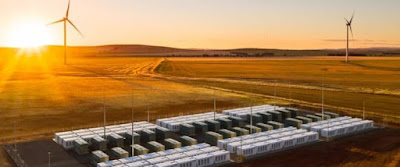U.S. Goes All In On Nuclear Power In Space Race With China
The United States is doubling down on nuclear power and propulsion systems in the new space race with China. The Trump Administration unveiled in the middle of December a National Strategy for Space Nuclear Power and Propulsion, the so-called Space Policy Directive-6, aiming to develop and use space nuclear power and propulsion (SNPP) systems to achieve scientific, national security, and commercial objectives.
In the new space race between Western nations and China, the United States is betting on developing and demonstrating the use of new SNPP capabilities in space.
The strategy on nuclear power and propulsion sets a goal for the U.S. to develop uranium fuel processing capabilities that enable fuel production that is suitable to lunar and planetary surfaces and in-space power, nuclear electric propulsion (NEP), and nuclear thermal propulsion (NTP) applications. Another objective is to “demonstrate a fission power system on the surface of the Moon that is scalable to a power range of 40 kilowatt-electric (kWe) and higher to support a sustained lunar presence and exploration of Mars.”
Collaboration with the private sector is also a pillar of the nuclear power and propulsion strategy.
NASA strongly supports the nuclear space strategy, pointing out the advantages of nuclear power and propulsion in driving spacecraft.
“Space nuclear systems power spacecraft for missions where alternative power sources are inadequate, such as environments that are too dark for solar power or too far away to carry sufficient quantities of chemical fuels. Space nuclear systems include radioisotope power systems and nuclear reactors used for power, heating, or propulsion,” NASA said, commenting on the new national strategy.
NASA believes that nuclear thermal propulsion (NTP) is an attractive option for in-space propulsion for exploration missions to Mars and beyond. NTP offers virtually unlimited energy density and specific impulse roughly double that of the highest-performing traditional chemical systems, according to NASA.
As part of the U.S. strategy, NASA’s near-term priority will be to mature and demonstrate a fission surface power system on the Moon in the late 2020s, in collaboration with the Department of Energy and industry. Such a system could provide power for sustainable lunar surface operations and test the potential for use on Mars.
Earlier in 2020, the Department of Energy said that NASA plans to build a base and a nuclear power plant on the Moon by 2026 and is inviting proposals from companies ready to take on the challenge. The plan will involve the construction of a 10-kW class fission surface power system to be used for demonstrative purposes. The plant is to be manufactured and assembled on Earth and then shipped to the Moon on a launch vehicle. This vehicle will take the plant to Moon orbit, from where a lander will take it to the surface of the satellite. The demonstration will continue for one year, and if successful, it could open the door to other missions on both the Moon and Mars.
“Space nuclear power and propulsion is a fundamentally enabling technology for American deep space missions to Mars and beyond. The United States intends to remain the leader among spacefaring Nations, applying nuclear power technology safely, securely, and sustainably in space,” Scott Pace, Deputy Assistant to the President and Executive Secretary of the National Space Council, said in a statement, carried by SpacePolicyOnline.com.
The U.S. should continue to enable American entrepreneurs and innovators to further bolster its commercial space industry to continue leading the space race, U.S. Secretary of Commerce Wilbur Ross wrote in an op-ed in December.
“Competition is increasing, especially between Western nations and China. Our advantage in this new space race is the U.S. commercial space industry. It is critical that we continue to enable American entrepreneurs and innovators, lest we miss the opportunity and potentially lose the race,” Secretary Ross said.
By Tsvetana Paraskova for Oilprice.com











